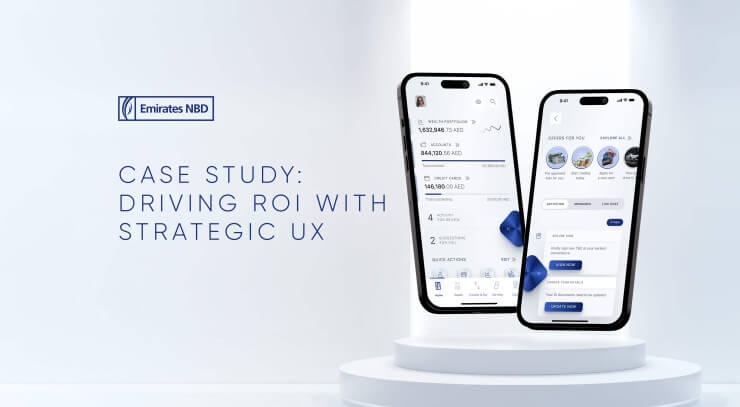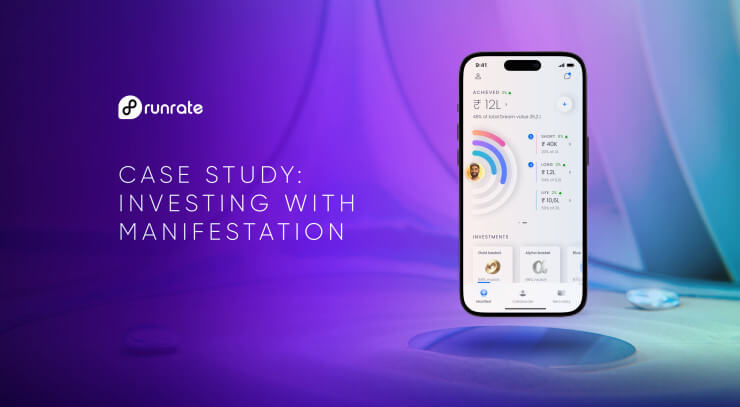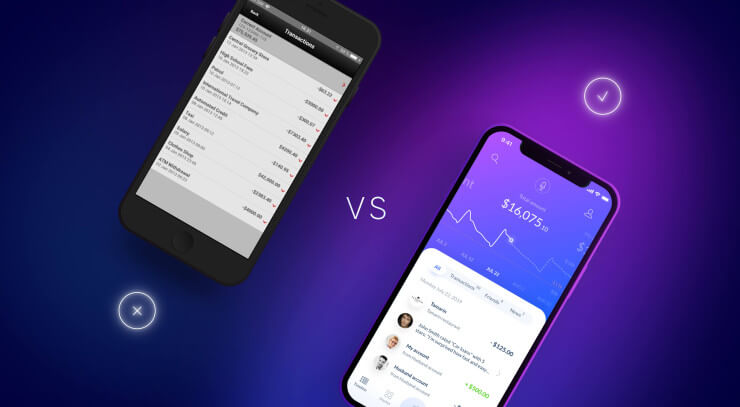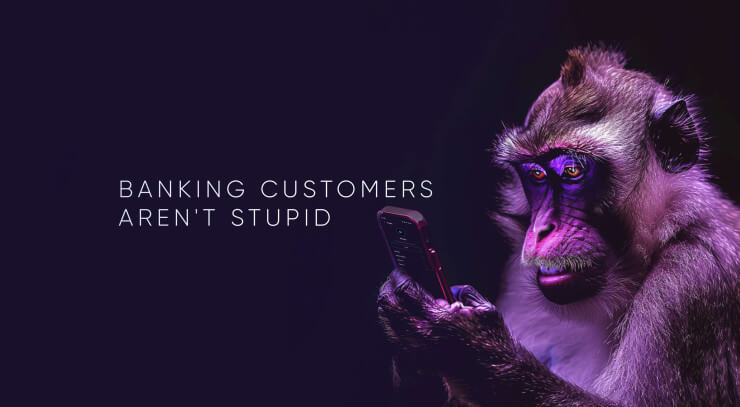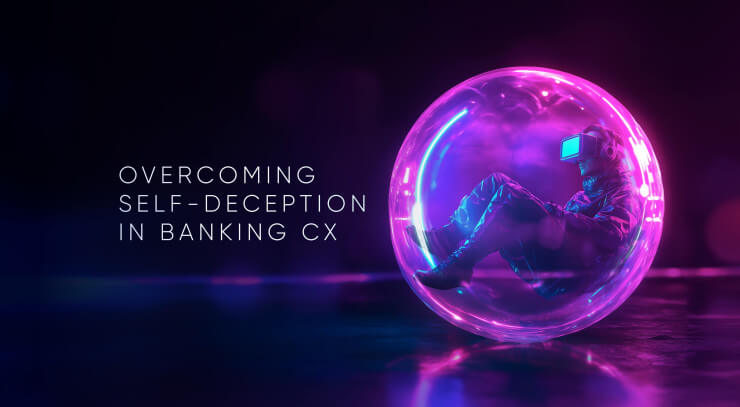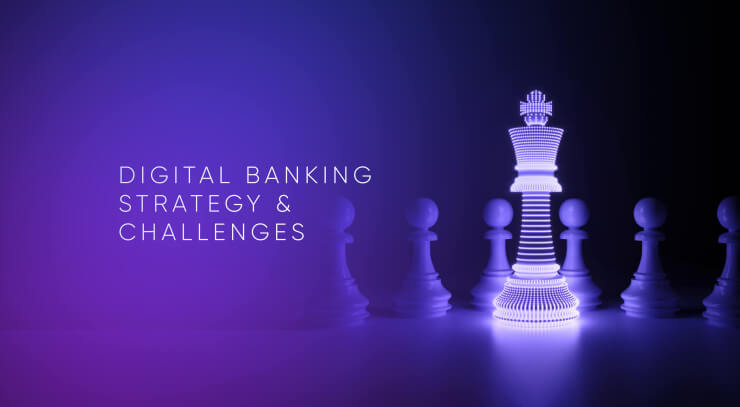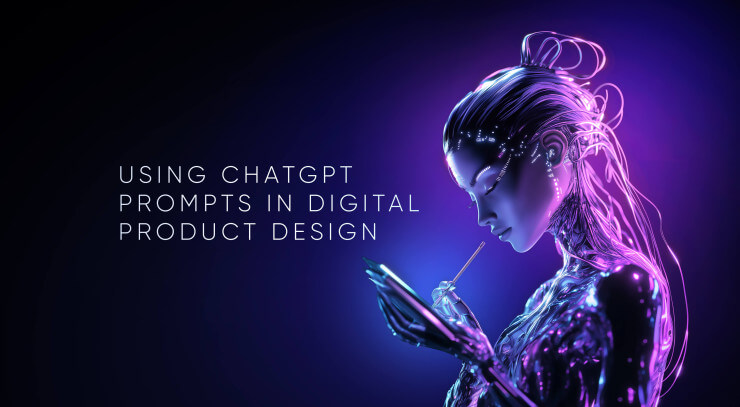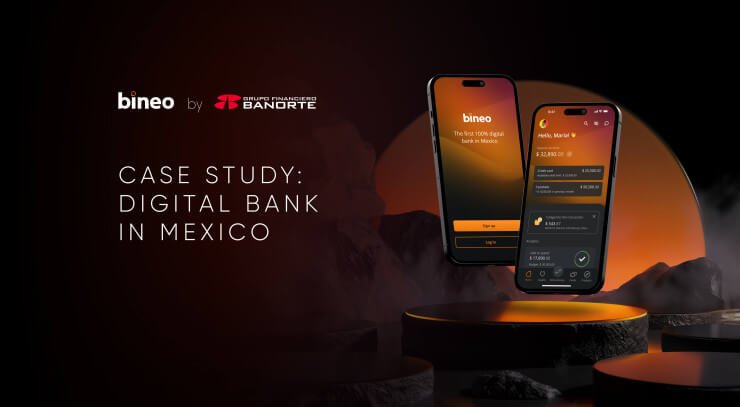For decades, banks competed through branch locations, branding and fee structures. In 2026, the real battleground will not be on the street—it’s already in the palm of your hand. The smartphone app has become the front line of financial competition. Any banking app that feels generic, uninspired or offers little real value is already lagging behind. Because today’s users won’t wait—there’s always a smarter, faster and more useful app waiting to take its place.
Industry Disruption
We all have witnessed how quickly markets can shift when a more compelling digital experience arrives:
- Netflix’s streaming overtook Blockbuster’s rental model.
- Apple’s iPhone disrupted Nokia and BlackBerry.
- Facebook and Twitter outpaced traditional media.
- Google left Yahoo behind in searches.
- Zoom outperformed Skype in video calls.
- Uber challenged traditional taxis.
- Amazon reshaped retail with customer focus.
- iTunes and Spotify transformed music consumption.
Finance faces the same reality: bold, user-first design delivered through seamless digital platforms is what separates the leaders from those destined to become footnotes.
1. The Smartphone as a Personal Bank Branch
Back in the day, the bank’s branch was a building on Main Street—easy to spot and hard to ignore. Now, that branch lives as an icon on your phone’s screen. But it’s not just a logo anymore—it’s users’ personal connection to their money, 24/7. People don’t want to wait in lines or deal with uninterested tellers. They want a banking app that’s simple, smart and feels like it understands what they need before they even ask. According to Quanti research, by the end of 2024, 3.6 billion people worldwide were expected to use mobile banking apps—up from 2.7 billion in 2020. This explosive growth means mobile banking is no longer a niche—it’s the norm. Banks that fail to deliver excellent mobile experiences risk losing billions in potential customers.
Part of making that experience great is what UXDA calls “Dopamine Banking.” It’s about designing banking so it feels rewarding—little wins that spark joy. Whether it’s a quick celebration when you hit a savings goal, a smooth look and feel that matches your vibe or subtle cues that show you’re making progress, these moments keep people coming back. When your app feels good to use, it doesn’t just get attention—it builds a real connection with your brand.
2. Don’t Just Digitize—Revolutionize
EPAM research (2020) shows 63% of people choose their primary bank based on trust. But trust isn’t earned by just having a mobile-friendly app. It comes from meaningful, standout experiences. Financial leaders must ask: how can we build real, lasting trust with users? The answer lies in offering what others don’t—features that make life easier and smarter, like real-time financial insights, savings alerts that actually help and seamless integration with the digital tools people already use. When a financial app consistently adds value, it stops being just another tool—it becomes a trusted part of everyday life.
To truly stand out, financial institutions need to look beyond features. The app’s design, tone and overall feel should work in harmony—telling a clear, authentic story that reflects the brand and resonates with users’ values. When everything aligns and trust is earned, the app becomes more than a tool—it becomes a meaningful part of users’ everyday lives.
3. Leverage Technology to Elevate Value
If you’re not yet using AI, machine learning or personalized insights, you’re already falling behind. According to a McKinsey report (2022), companies using AI-driven personalization have seen up to a 15% boost in customer engagement and a 10-20% increase in cross-sell revenue. The right technology understands what customers need and delivers solutions that truly make their lives easier—whether that’s faster loan approvals or budgeting tips tailored just for them. Plain and simple, “generic” won’t cut it anymore. Smart insights are today’s real value.
Adding moments of celebration—like recognizing a small investment or paying off a debt—makes the experience feel rewarding and keeps people coming back. It’s not about tricks or manipulation; it’s about helping users feel good about their financial progress in a way that’s personal and motivating.
4. Brand Authenticity Wins
People can spot inauthenticity online from miles away. A financial brand has to show real values—not just corporate talk. Customers want to know the financial brand is here to make their lives better, not just to squeeze fees out of them. The era of hidden charges and padded revenue is over. Deliver honest, transparent value, and your customers will reward you with loyalty—and more downloads.
Authenticity goes hand-in-hand with every part of your digital experience. Whether it’s push notifications, in-app messages or customer support, every interaction should feel true to your brand’s purpose. If your voice is friendly and approachable, make sure your support sounds that way, too. If innovation is your pride, let it shine in every pixel of your app’s design. Consistency and genuine connection build trust—turning your app from just another service into a trusted companion—not a forgettable commodity.
5. Embrace Rapid Evolution
Innovation in Fintech never stands still. Speed to adapt and exceed users' needs is everything, and if the institution can’t keep up, it’ll get left behind. That means constantly testing new features, listening to feedback and improving the user experience. When something doesn’t work, ditch it and move on fast. Today’s customers expect the same quick, ongoing improvements they see from top tech companies. Financial firms that move slowly and cautiously risk being overtaken by nimble competitors who aren’t afraid to try, fail and adapt quickly.
6. Elevate Experiences with Dopamine Banking and Digital Branding
At the crossroads of UX design, psychology and brand strategy lies the idea of Dopamine Banking—mixing small rewards, gamification and emotional connection to make managing money feel less like a chore and more like a positive experience. When combined with strong digital branding, it turns your app from a tool into something users actually enjoy using. Here’s how it works:
- Micro-Moments of Delight: Little animations, congratulatory messages and progress bars that celebrate wins—like building an emergency fund or paying off debt—spark positive feelings that boost satisfaction and loyalty.
- Personalized Storytelling: Instead of dry updates like “You saved $500,” try framing it as “You’re one step closer to your dream vacation.” This personal touch creates an emotional bond and strengthens your brand.
- Community Building: Features that let users share goals or see how they stack up against peers build a sense of belonging. When done right, community connections encourage more frequent use and long-term loyalty.
“These days, your financial brand is only as good as your digital product.”
Revamping your App Interface Isn't Enough
Digital banking isn’t just growing—it’s dominating how customers engage. Yet, despite pouring millions into flashy features and sleek interfaces, many banks still miss a critical truth: poor user experience isn’t just a design flaw—it’s a serious business risk.
According to Gitnux (2025), a striking 70% of banking customers say they would switch banks for better service, and nearly half—48%—would leave because of poor digital experiences. This shows that a quick “design fix” or simple “interface update” won’t cut it anymore. Winning and keeping customers, and building true loyalty, all hinge on delivering a user experience that’s seamless, intuitive and genuinely valuable. UX isn’t just a detail—it’s a business-critical factor that directly impacts your bottom line.
In today’s world, digital presence is a key brand representation. If your app feels clunky, outdated or confusing, that’s exactly how people will view your entire bank. But when you invest in a digital experience that lives up to your brand’s promise, you turn casual users into passionate advocates. Every time someone opens your app, they’re not just managing money—they’re deciding if you deserve their trust.
Strong, familiar financial brands no longer have a free pass—customers now have competitors just a tap away, eager to win them over with better experiences, more engaging service and genuine emotional connections. To stay competitive, financial institutions should be bold, innovate relentlessly, harness Dopamine Banking to create joy and reward and build a digital brand that truly connects. If they don’t, fresh digital challengers will zoom past them and right inside the customers’ pockets.
The High Cost of “Good Enough” UX
With neobanks and Fintech disruptors setting a new standard for speed, simplicity and design, traditional banks no longer have the luxury of complacency. And the stakes are high: 89% of customers would switch to a competitor after a poor experience, according to Oracle.
Here’s the real issue—many banks are misdiagnosing the problem. They blame weak conversions or shrinking loyalty on branding or marketing missteps. But more often than not, the root cause is a clunky, frustrating digital experience that wasn’t built with real user needs in mind.
If your app is hard to navigate, overloaded with forms, full of confusing errors and/or lacking a clear and consistent brand identity, users won’t stick around. They’ll leave—and take their money with them. That’s not just bad design. It’s a direct blow to your bottom line.
Why Banks Are Bleeding Business Over UX
Traditional banks often rely on outdated technology stacks and legacy systems that are difficult to overhaul. The approach to UX becomes reactive rather than proactive. Designers are hired to “fix the interface,” while the deeper issues—process inefficiencies, policy bottlenecks, brand erosion, product ecosystem inconsistency and a lack of strategic vision—remain unaddressed.
But when your competition is a digital-native neobank that’s hyper-focused on delivering intuitive, frictionless experiences, that gap becomes glaring. Consider these telling numbers from McKinsey research (2023):
- Organizations that improved Customer Experience (CX) by at least 20% saw a 5-10% boost in share of wallet.
- Companies that are leaders of CX achieved more than double the revenue growth of “CX laggards” between 2016 and 2021.
The cost of inaction? Each percentage point of customer attrition can translate to millions of dollars in lost annual revenue. This is not a mere design quibble—it’s bleeding business on a monumental scale.
The UX Ripple Effect on Profitability
Here’s where the perspective shift needs to happen. UX isn’t about designing generic app screens; it’s about crafting an entire end-to-end customer journey that influences:
1. Acquisition: A frictionless, brand-aligned experience generates positive word-of-mouth. People rave about delightful digital journeys. The quicker and simpler the onboarding or account-opening process, the higher the conversion rate. Long forms and complicated verification processes kill momentum and send prospects to your competitors.
2. Engagement: Once you have customers on board, the app or website must be intuitive. If essential features, like bill payments or fund transfers, require multiple confusing steps, engagement plummets—and so do cross-sell and upsell opportunities.
3. Retention: Digital frustration is the number one driver behind account closures. According to the Futurice Customer Survey (2024), a leading digital innovation consultancy, 70% of respondents said they were “likely” or “very likely” to switch providers for a more reliable mobile app. Customers pleased by consistently rewarding micro-interactions are more likely to explore cross-sell and upsell offers.
4. Customer Lifetime Value: Dopamine Banking and cohesive branding build an emotional bond, creating customers who stick around for years. A delightful UX increases loyalty, translating directly to higher lifetime value. Customers who enjoy their banking experience are far more likely to sign up for additional products—from credit cards and loans to insurance and investment accounts.
5. Competitive Differentiation: In a saturated market, ease of use and overall digital delight can be the deciding factor when customers choose—or leave—an institution. A bank that continuously refines its UX stands out from competitors, establishing a reputation for innovation and customer-centric thinking.
The Real Role of Leadership
Who is responsible for UX? Is it the design team, the product team or the marketing gurus? The truth? It starts at the top. C-level executives must recognize that UX is a business strategy—one that has to be led, measured and invested in like any other major corporate initiative. Competition among banks no longer takes place on city streets or TVs; it has moved to phone screens.
Key steps for leadership to consider:
1. Resource Allocation: Budget for UX improvements not as an afterthought but as a core part of your digital transformation roadmap.
2. Cross-Functional Collaboration: Bring together IT, design, product management, marketing and operations to identify pain points and streamline processes.
3. Data-Driven Decision Making: Use analytics to uncover where drop-offs occur and then optimize.
4. Cultural Mindset Shift: Ensure a company-wide recognition that UX and UI product design is a driver of business outcomes and not merely an aesthetic layer.
5. Continuous Improvement: The best UX strategies are not static. They involve constant testing, feedback loops and iterative design changes that adapt to evolving customer needs.
Bridging the Gap: Design Meets Business Goals
A functional yet generic interface that lacks emotional connection, fails to address core user needs and does not convey authentic brand values is merely superficial—offering no substantive value beyond surface appearance. Design must be rooted in actual user behavior—pain points, preferences and motivations—and tightly aligned with clear business goals.
If reducing call-center calls is the aim, build intuitive navigation, quick actions, seamless UI and self-service tools right into the app. Want to boost deposits? Make opening a high-yield savings account fast and easy online. No design choice should be random. Every pixel, every word and every user flow must answer one question: “Does this help users reach their goals while advancing ours?”
Financial brands should consider using Dopamine Banking to create moments of genuine joy—push notifications celebrating savings milestones or gamified rewards that make bill-paying feel satisfying. This isn’t manipulation; it’s about building real emotional connection that motivates better financial habits.
Modern financial brands aren’t built on logos—they’re built on digital experiences. Every interaction—from micro-animations to the tone of error messages or personalized onboarding—must reflect your core values. As UXDA says, “People are loyal to the experience, not just the brand.” Consistent, authentic digital journeys turn bland banking into something memorable.
We live in a world in which Amazon sets convenience standards, Netflix defines personalization, and Apple leads in intuitive design. Customers expect the same seamless, on-demand experience from their banks. Fail to deliver, and you lose more than customers—you lose trust, reputation and revenue.
Bottom line: UX in digital banking isn’t just design anymore. It’s business strategy, brand differentiation and survival. Get it right, and you’ll win market share and loyalty. Get it wrong, and you risk being left behind as nimble competitors rewrite the rules.
Discover our clients' next-gen financial products & UX transformations in UXDA's latest showreel:
If you want to create next-gen financial products to receive an exceptional competitive advantage in the digital age, contact us! With the power of financial UX design, we can help you turn your business into a beloved financial brand with a strong emotional connection with your clients, resulting in success, demand, and long-term customer loyalty.
- E-mail us at info@theuxda.com
- Chat with us in Whatsapp
- Send a direct message to UXDA's CEO Alex Kreger on Linkedin








